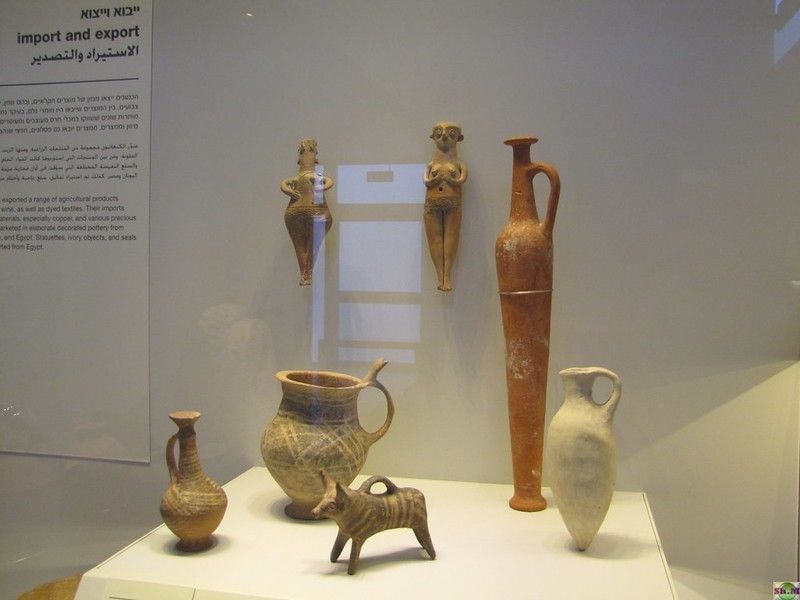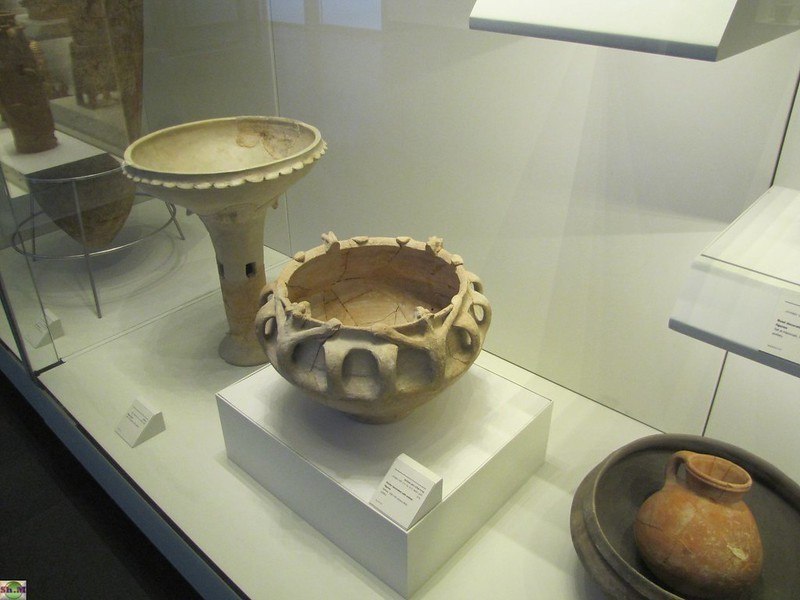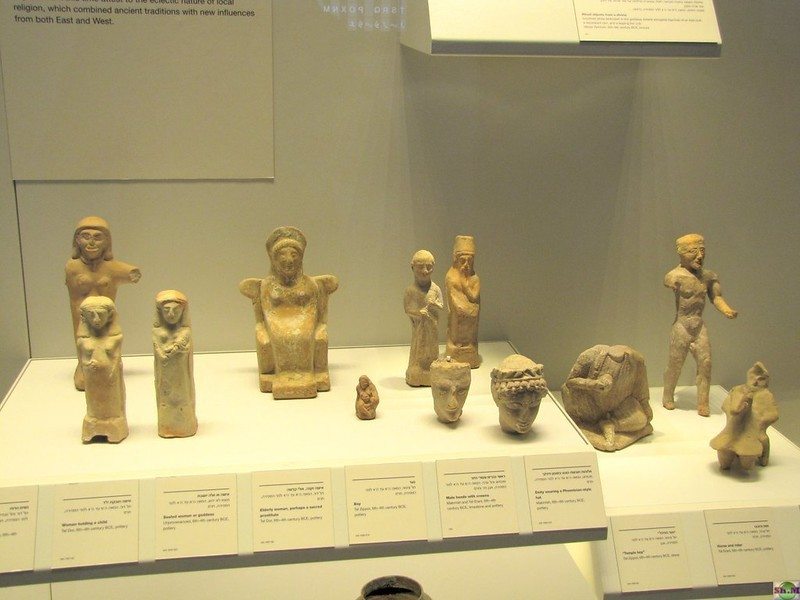
While Judaism accepts certain authors by tradition, scholars still ask: Who wrote the Hebrew Scriptures? They are not trying to sabotage Judaism—in fact, there is a good reason to ask this question, and the answers potentially enrich, rather than depreciate, the Jewish faith. The question has historical, anthropological, philosophical, and theological implications. Furthermore, because of the Old Testament, these insights are equally relevant to Christians. Later in this article, you can also read about how to gain a better insight into these Scriptures.
Hebrew Scriptures Outlined
The entire body of original Hebrew Scriptures is called the Tanakh, an acronym of the 3 categories of Hebrew Scriptures: Torah, Nevi’im, and Ketuvim. Each category comprises multiple books, originally written on separate scrolls.
The Torah, also called the Pentateuch in Greek, is the first 5 scrolls of the Tanakh: Genesis, Exodus, Leviticus, Numbers, and Deuteronomy. These books recount mankind’s beginnings with Adam and Eve, God’s covenant with Abraham (the father of the Abrahamic religions), and Moses’ leadership during the exodus from Egypt.
The Nevi’im are prophetic writings, including the Former Prophets (Joshua, Judges, Samuel, and Kings) and the Latter Prophets (Isaiah, Jeremiah, and Ezekiel), plus the 12 Minor Prophets (Amos, Jonah, Joel, etc.). These books tell about the colonization of the Promised Land, events leading up to the Babylonian takeover, and the struggle to restore spiritual and political life in Judea post-exile.
The Ketuvim comprises more literary texts, including the poetic books (Psalms, Proverbs, and Job); the 5 Scrolls (Song of Songs, Ruth, Lamentations, Ecclesiastes, and Esther); and the books of Daniel, Ezra and Nehemiah, and Chronicles. These books are harder to date or categorize, as they are more literary and thematic than those of the Nevi’im and Torah, but mostly they express King Solomon’s insights and the struggles and triumphs of the Jews under foreign domination.
Genres and Themes in Hebrew Scriptures

A major theme in Hebrew Scriptures is the struggle of Israel to obey God and live according to His will. Immediately, the people showed signs of difficulty: While Moses was receiving the Ten Commandments from God, the people began idol worship. Later, when Israel was led by kings, spiritual success seemed to coincide with the monarch’s devotion to God.
Another common theme is the struggle to perpetuate proper worship while in foreign custody. The book of Daniel displays tremendous triumph in this area—Daniel and his comrades are sent to be executed for refusing to worship like Babylonians, but God intervenes.
A third theme that recurs throughout the Jewish Bible is the power of God’s covenant with Abraham. In fact, this is the resolution of every narrative plot of the Hebrew Scriptures. Whether the people digress seemingly irreversibly from God’s calling or whether they seem to be doomed to genocide at the hands of a foreign power, God ultimately sustains some remnant of his chosen people, and, to the extent that they remain righteous, he rewards them; this leads into arguably the most prevalent Tanakh theme: God’s execution of justice and mercy.
The Language Used
Originally, the Jewish texts were recorded in Ancient Hebrew. However, some later holy texts, such as parts of Daniel and Ezra, are recorded in Aramaic—this supports the argument for post-exilic authorship. (Aramaic grew into the main language of the Jewish people, and the Semitic world as a whole, during the post-exilic period and the early 1st millennium AD.)
The Masoretic texts are the main source of the Jewish Bible: Masoretic Jewish scholars maintained and analyzed these texts from ancient times up to the medieval period. They added pronunciation guide marks to aid proper reading of the Hebrew texts. Therefore, these marks, known as diacritical marks, indicate Masoretic edition.
The When Question

In order to answer who wrote the Hebrew Scriptures, one has to look at the complicated question of when they were written. Even now, anthropologists, historians, and theologians have relatively few definite answers, and any new information tends to spark debate rather than conclusion.
The time a text was written is not necessarily the same time that the recorded events themselves happened; furthermore, the contents of a text could have been passed by oral tradition or assembled from other unknown texts before being recorded. Judaism is an ancient religion, and for centuries, most Jews learned the faith orally.
Generally, though, scholars agree that the Tanakh, as we know it today, was compiled by the early 1st millennium AD. The Torah scrolls were likely written first—likely sometime after the 6th century BC. The Nevi’im were probably written between the 6th century BC and the turn of the millennium, since these texts describe the Babylonian exile and restoration period.The poetic and narrative books of the Ketuvim were likely written last—possibly as late as the 2nd century AD, as literary overviews of the faith.
A recent anthropological discovery suggests that there were a fair number of literate Jewish people before the Babylonian attack (586 BC), which leaves open the possibility that parts of the Jewish Bible, especially the Torah, could have been written down earlier than scholars previously thought possible. However, most do not feel that this is sufficient evidence to change former conclusions.
The Authorship Question: Who Wrote the Hebrew Scriptures?
Traditionally, authorship is defined by religious tradition: Moses wrote the entire Torah; Jeremiah wrote the prophetic scrolls Jeremiah and Lamentations; Samuel wrote Samuel and Kings; Isaiah wrote Isaiah, etc. Ultimately, though, many Jews and Christians view their Bible as inspired, or even written, by God Himself.
Scholars look on religious texts with a secular eye: They reject the traditional authorship (unless there is supporting evidence) and dismiss divine inspiration. Instead, they look at narrative structure, literary styles, language usage, dates, and historical events to determine who might have written the texts. It is difficult, even impossible, to prove authorship, but scholars draw sound conclusions and insights from observation and analysis.

In the case of the Torah, scholars easily pick up on clues that there were multiple writers, none of whom were likely Moses. From the start, in Genesis, one clue is that God is at times referred to as Elohim–which is actually plural, suggesting some polytheistic leanings—and other times as Yahweh, a monotheist title. Also, there are odd repetitions in the Genesis account that point to multiple versions of the same story being combined.
The history of Leviticus and Numbers is even more intriguing. There is evidence of Aramaic words and Babylonian/Chaldean influence in the language, suggesting 6th-century authorship. Here, historians suspect multiple writers of similar style, known now as “Priestly” writers. Therefore, the kosher laws likely were not given by Moses in the early 1st millennium BC, but rather they were added centuries later by religious leaders.
Deuteronomy seems to come from a different author altogether. One hint that this is not Moses is that the narrator speaks of Moses in the third person and describes events around and after Moses’ death. It also contains anachronisms (if you assume it was written in the 9th century BC) and language characteristic of Babylonian influence.
However, there is evidence that Ezra might really have written Ezra and other prophetic books too, as one of the Priestly writers. In fact, he might even have played a role in or editing the Tanakh as a whole.
Scholars generally think that the Ketuvim books were written at least partly as a push back against Greek influence. The late 1st millennium BC world was increasingly dominated by Greek culture. However, scholars do not seem to have specific guesses for who wrote the Hebrew Scriptures for these books.
Are Hebrew Scriptures Relevant to Modern Judaism?
As it turns out, most Jewish worship does not use the Tanakh, even though it has always been viewed as the original source. Instead, the Talmud is actually the main text used for group and individual worship. The Talmud is a compilation of Jewish laws, understood to be based on the core teachings of the Tanakh. Similarly, the Midrashim are rabbinic commentaries/analyses on Hebrew Scriptures. Both of these were compiled from the middle 1st millennium BC to the 2nd century AD.
In conclusion, the holy texts of Judaism have grown and evolved by the work of Jewish leaders from very different time periods. However, here we are at the beginning of the 3rd millennium AD—are these texts relevant to modern Jewish people? The answer, in the opinion of leading Jewish thinkers, is yes. In fact, the Hebrew Scriptures have been used as inspiration and insight for the Zionist movement—the sustenance of Israel as a Jewish homeland. Today, Zionism and the existence of Israel is a source of controversy; however, maybe this means it is time to reanalyze these same texts and seek more insight.
Learning Biblical Hebrew
 When considering who wrote the Hebrew Scriptures, one of the biggest factors is an author’s use of the Ancient Hebrew language. Therefore, if you are interested in delving deeper into this sort of study, consider learning Biblical Hebrew. While there are many ways to do this, one that allows completely online study right from the source is the Israel Institute of Biblical Studies, which is affiliated with the Hebrew University of Jerusalem.
When considering who wrote the Hebrew Scriptures, one of the biggest factors is an author’s use of the Ancient Hebrew language. Therefore, if you are interested in delving deeper into this sort of study, consider learning Biblical Hebrew. While there are many ways to do this, one that allows completely online study right from the source is the Israel Institute of Biblical Studies, which is affiliated with the Hebrew University of Jerusalem.
The Israel Institute offers a variety of Biblical courses from beginning to advanced level. All courses include interdisciplinary explorations—cultural, archaeological, historical, and social questions are interwoven with course material. Also, while these online courses are offered worldwide and lectures are recorded, students are encouraged to be part of live interactive lectures.
The Israel Institute’s Biblical Hebrew course is actually a line of 5 separate progressive courses that take the complete beginner to expert level—it is almost like an entire degree, rather than just a course. (However, you get credit for each separately and can certainly stop after any one of them without losing credit on those completed.)
These are not just language courses: Surprisingly early on, you get to apply what you have learned to translations and analysis of biblical texts. Also, these texts are put in context: You get to compare ancient literary styles as they are used in the Bible to how they are used in other Hebrew texts of the same time period. Obviously, these skills are applicable to the question of who wrote the Hebrew Scriptures—knowledge of the evolution of writing styles and language use are two of the main ways that scholars establish possible authorship.
In the first course, you learn the Hebrew alphabet and the special way vowels are rendered in Hebrew. The course quickly moves to word formation, including spelling, prefixes, and suffixes. In the second half, there are even verb conjugations and translations from the book of Ruth. The second course is a natural progression with more prepositions, article usages, verb conjugations, participles, etc., plus more advanced analyses of Bible readings.
The third course analyzes the famous story of David and Goliath and goes into more advanced verb forms and pronunciation issues. Later on, the course continues with the story of David advancing to kingship and covers yet more verb forms—including other verb cases (as indicative, interrogative, etc.).
The fourth course goes deep with literary analysis, comparing ancient Hebrew poetic techniques with the poetic texts of the Tanakh, mostly Proverbs and Ecclesiastes. The later part of the course moves to the prophetic books, especially Isaiah, and considers different categories of prophecy and the connection between language and presentation of themes.
The last course goes into the way the Hebrew alphabet has changed—both the letters themselves and the way letters and marks are used. It covers different dialects that appear in biblical texts. It also challenges the student to connect the linguistic and literary to the historical. Different Hebrew Scripture texts—the Dead Sea Scrolls and the Qumran Isaiah Scroll—are compared to other writings of the time. Essentially, this course really turns the student into a biblical scholar.
Use Language to Delve Deeper
Linguistic knowledge is the main way authorship is established or ruled out. Scientific, historical, literary, or archaeological approaches are critical, but usually, they are only helpful when used together with linguistic knowledge of Biblical Hebrew. Therefore, despite no longer being spoken today, this ancient language is very much worth learning; it likely has many more insights to give to those of us living now.
Photos courtesy of Shalva Mamistvalov on Flickr.